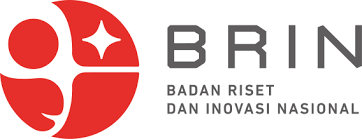Analyzing Government Spending and Consumers’ Welfare in Nigeria: An Auto-Regressive Distributed Lag Approach (ARDL)
DOI:
https://doi.org/10.61166/interdisiplin.v2i5.130Keywords:
Consumers’ welfare, recurrent expenditures, capital expenditure, lending interest rate.Abstract
Abstract
Nigerian government spending on recurrent expenditures, particularly on financial intervention programmes, has increased during the past eight years. Despite this, the country is still recognized as a poor nation with a high percentage of poverty in Sub-Sahara Africa. Therefore, the study examined the effect of government spending on consumers’ welfare from 1986 to 2023. The reason for the timeframe was due to the adoption ARDL approach. The study used secondary data that was collected from Central Bank of Nigeria, Statistical Bulletin (2023), as well as, International Monetary Fund data base (2025). Augmented Dickey Fuller (ADF) and Philip Perron (PP) unit root test were used for the pretest; while Auto-regressive Distributed Lag was used to achieved the formulated objectives. Both the ADF and PP confirmed that lending interest rate was stationary at level; while, private consumption expenditure, recurrent expenditure, capital expenditure, and consumer price index were stationary at first level difference. The bound test confirmed a long-run association between the variables. The ARDL result showed that recurrent expenditure and lending interest rate were significantly and positively related to private consumption expenditure, whereas consumer price index was significantly and negatively related to it. Furthermore, capital expenditure was insignificant. It was concluded that recurrent expenditure was the only means through which Nigerian government boosts consumers’ welfare in term of spending, while maintaining lower lending rates and consumer price index support consumers’ welfare. Therefore, the study recommended that governments at the federal, state, and local levels should increase their capital expenditure through huge investments in infrastructure and other capital projects.
References
Akpan, P. E., & Atan, J. A. (2020). Government expenditure and private consumption in Nigeria: An empirical investigation. International Journal of Economics and Management Studies. 7(1), 75-85.
Chandana, A., Adamu, J. & Musa, A. (2021). Impact of government expenditure on economic growth in Nigeria, 1970-2019. CBN Journal of Applied Statistics, 12(1), 13-25
Connolly, M., & Li, C. (2016). Government spending and economic growth in the OECD countries. Journal of Economic Policy Reform, 19(4), 386–395.
Ernest, S. O. (2011). Government expenditure on health, economic growth and long waves in A CGE Micro-Simulation Analysis: The Case of Nigeria. European Journal of Economics, Finance and Administrative Sciences, 3(4), 34-42.
Falade, A. O. O. (2023). Foreign aids and sustainable development in Nigeria: An application of Dynamic Least Squares Approach. ORGANIZE: Journal of Economics, Management and Finance, 2(4), 196–210. https://doi.org/10.58355/organize.v2i4.61
Falade, A. O. O. (2019). Poverty reduction in Nigeria: Do remittances inflow really matter? Nigerian Studies in Economics and Management Sciences, 2(1),26 – 33.
Falade, A. O. O., Aladejana, S. A., & Oluwalana, F. A. (2018). External debt in Nigeria: How sustainable using Heavily Indebted Poor Countries (HIPC) indicators? AAU Anal of Accounting, Educational and Social Research, 5(2), 34-43.
Fasoranti M. M., & Akindele, O. O. (2015). An assessment of the relationship between budget deficit syndrome and consumer welfare in Nigeria (1985 – 2014). Journal of Social Economics Research, 2(4), 58-74.
George-Anokwuru, C. C., & Ekpenyong, B. I. (2020). Government expenditure and inflation in Nigeria. Journal of Economics and Management Sciences, 3(2), 20-30.
Ichiue, H., & Nishiguchi, S. (2015). Inflation expectations and consumer spending at the zero bound: Micro evidence. Economic Inquiry, 53(2), 1086-1107.
Jong. C. L., Yi, J. W., & Sang, Y. J. (2019). Study of the relationship between government expenditures and economic growth for China and Korea. Journal of Economic Sustainability, 2(1), 34-42.
Keho, Y. (2019). Impact of government spending on private consumption: Evidence from ECOWAS Countries. Modern Economy, 10, 600-614.
Manasseh C. O., Abada, F. C., Ogbuabor, J. E., Onwumere, J. U. J., Urama, C. E., & Okoro E. 0. (2018). The effects of interest and inflation rates on consumption expenditure: Application of consumer spending model. International Journal of Economics and Financial Issues, 8(4),32-39.
Mogaji, O., & Falade, A. O. O. & Ogundipe, S. A. (2020). Inflation, interest rate and domestic investment in Nigeria: An Auto-Regressive Distributed Lag (ARDL) Approach. International Journal of Engineering and Management, 2(8), 516-525.
National Bureau of Statistics. (2021). Consumption Expenditure Pattern in Nigeria 2021, Volume I: Expenditure Pattern Report (Q4 2017-Q3 2021).
Ogundipe, M., & Adesola, A. (2022). Examine the impact of government expenditure on standard of living in Nigeria (1981 – 2018). Journal of Management Science, 3(2), 23-45.
Olaosebikan, O., Olaniyi, R. B., & Ojekunle, F. J. (2022). Impact of capital market performance on capital formation in Nigeria. FUOYE Journal of Finance and Contemporary, 3(2), 148-163. Available online: https://www.fjfci.fuoye.edu.ng/index.php/fjfci/article/view/60/51
Olubokun, S., & Agbede, M. O. (2018). Food price inflation and consumers’ welfare in Ondo State, Nigeria. Journal of Economics and Sustainable Development, 9(24), 20-32.
Omodero, C.O. (2019). Government general spending and human development: A case study of Nigeria. Academic Journal of Interdisciplinary Studies, 8(1), 51–60.
Salami D. K., Olabode O. S., & Atoyebi K. O., (2017). Effects of government health and education expenditures on economic growth in Nigeria. International Journal of Social & Management Sciences, Madonna University (IJSMS), 1(1):118–130.
Sephorah, M,. & Ayushi B. (2020). Consumer choice, inflation, and welfare. Research School of Economics, 3(9), 23-41.
Shafque, A., Muhammad, R., & Yaseen, S. A., (2017). Impact of rising food prices on consumer welfare in the most populous countries of South Asia. International Journal of Social Economics, 44(8), 1062-1077,
World Bank (2019). world development report, New York: Oxford university press.
World Bank (2021). Migration and development brief 27, migration and remittances: Recent development and Outlook, Special Topic on Global Compact on Migration. The World Bank, Washington, DC.
Yahaya N. (2019). Relationship between government expenditure and poverty: A study of Nigeria (1965–2014). Journal of Econo
Downloads
Published
How to Cite
Issue
Section
License
Copyright (c) 2025 Muru Bitrus Song

This work is licensed under a Creative Commons Attribution 4.0 International License.














